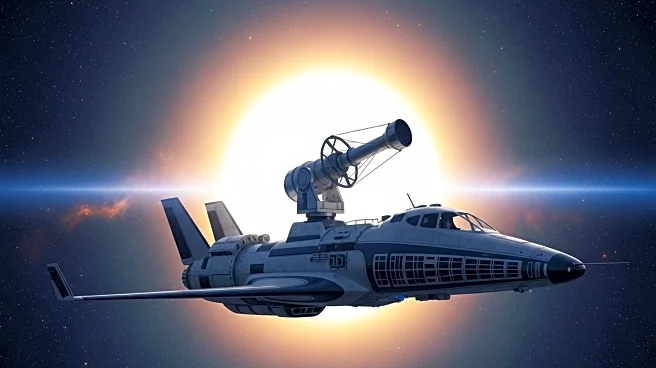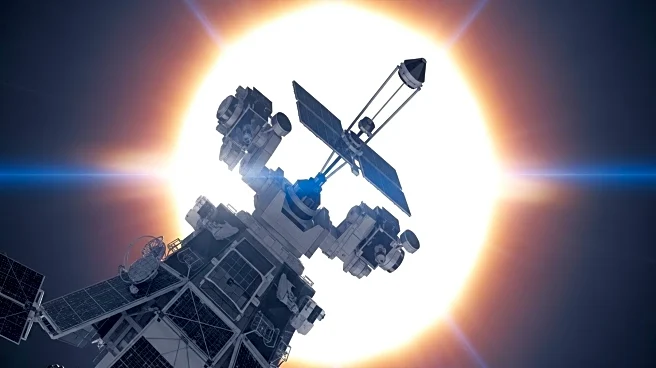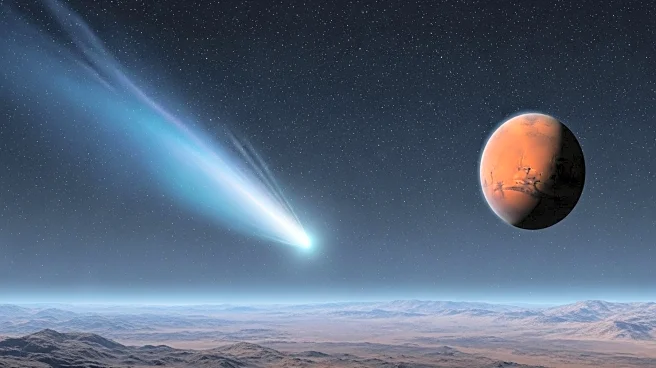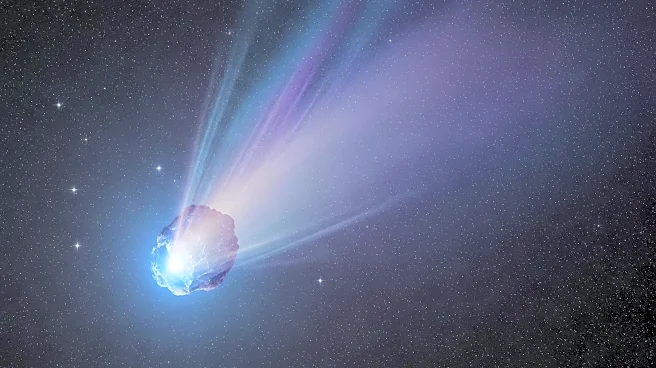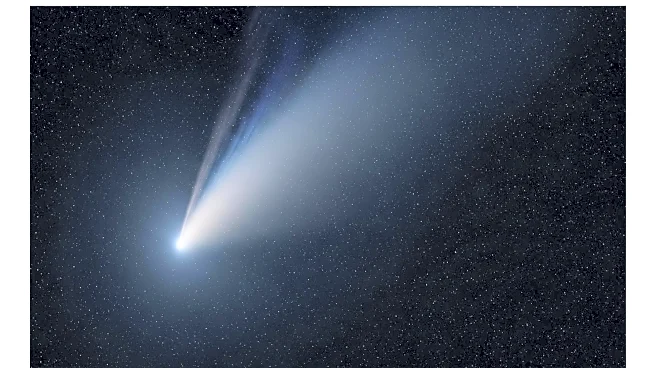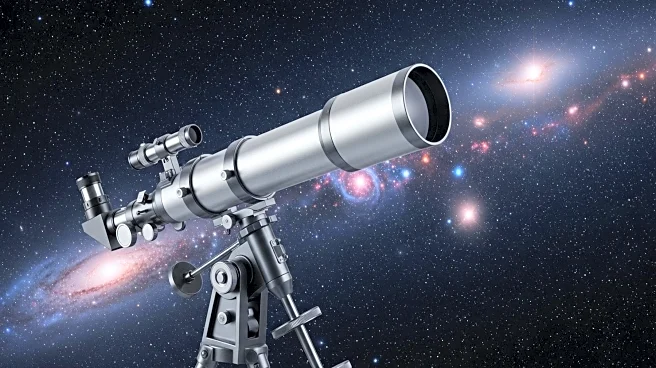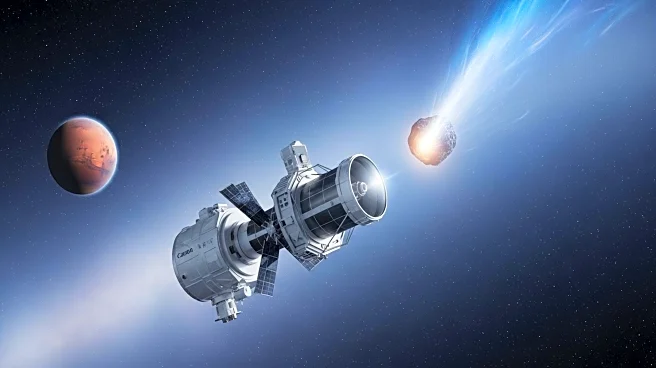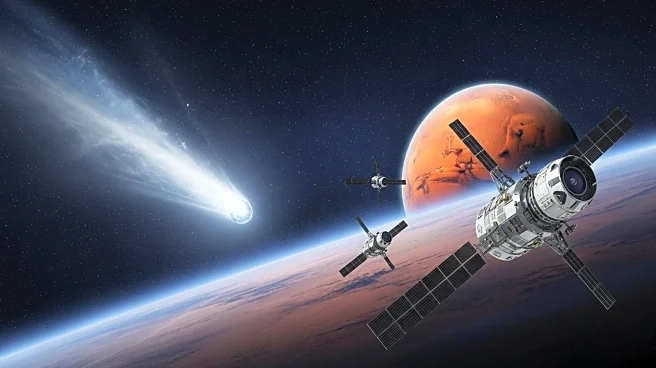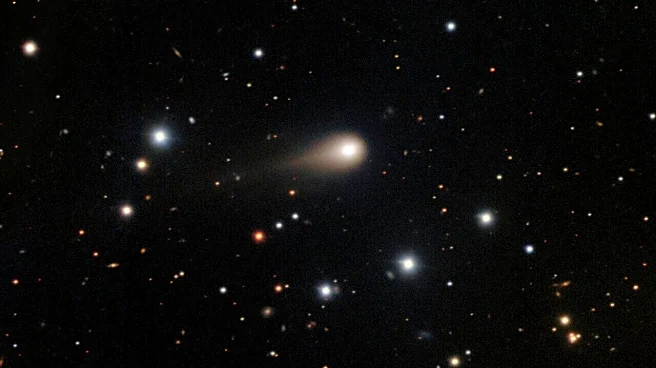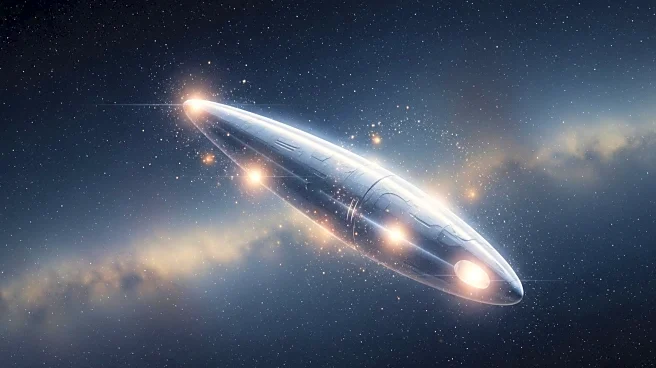What's Happening?
The interstellar comet 3I/ATLAS is currently being observed by various spacecraft as it travels through the Solar System. This comet, originating from outside our solar system, is on a trajectory that will soon take it out of view from Earth-based telescopes. However, spacecraft such as ESA's Mars Express and ExoMars Trace Gas Orbiter, as well as NASA's Psyche mission, are positioned to study the comet as it approaches the Sun. These observations aim to reveal the comet's chemical composition and activity, providing insights into its origins and the building blocks of planetary systems.
Why It's Important?
Studying interstellar objects like 3I/ATLAS offers a unique opportunity to compare the chemical makeup of comets from different star systems. This research could enhance our understanding of the diversity of planetary systems across the galaxy and the potential for shared building blocks. The data collected may also inform theories about the formation and evolution of our own solar system. As the comet approaches perihelion, the closest point to the Sun, the heat will cause its ice to vaporize, offering a rare glimpse into its core composition.
What's Next?
Observations will continue as the comet reaches perihelion between November 2 and November 25, 2025. During this period, instruments on ESA's Jupiter Icy Moons Explorer (JUICE) will be directed at the comet to capture detailed data. These observations are expected to provide further insights into the comet's structure and behavior, contributing to a broader understanding of interstellar objects.

